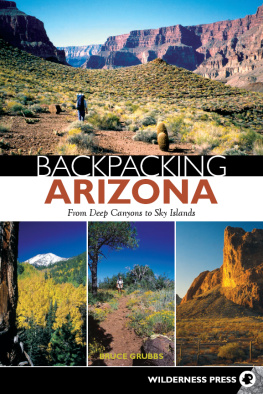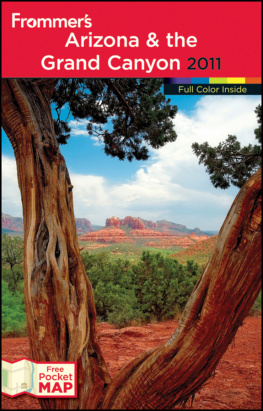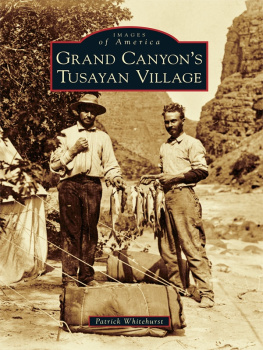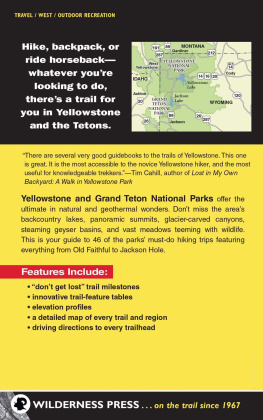

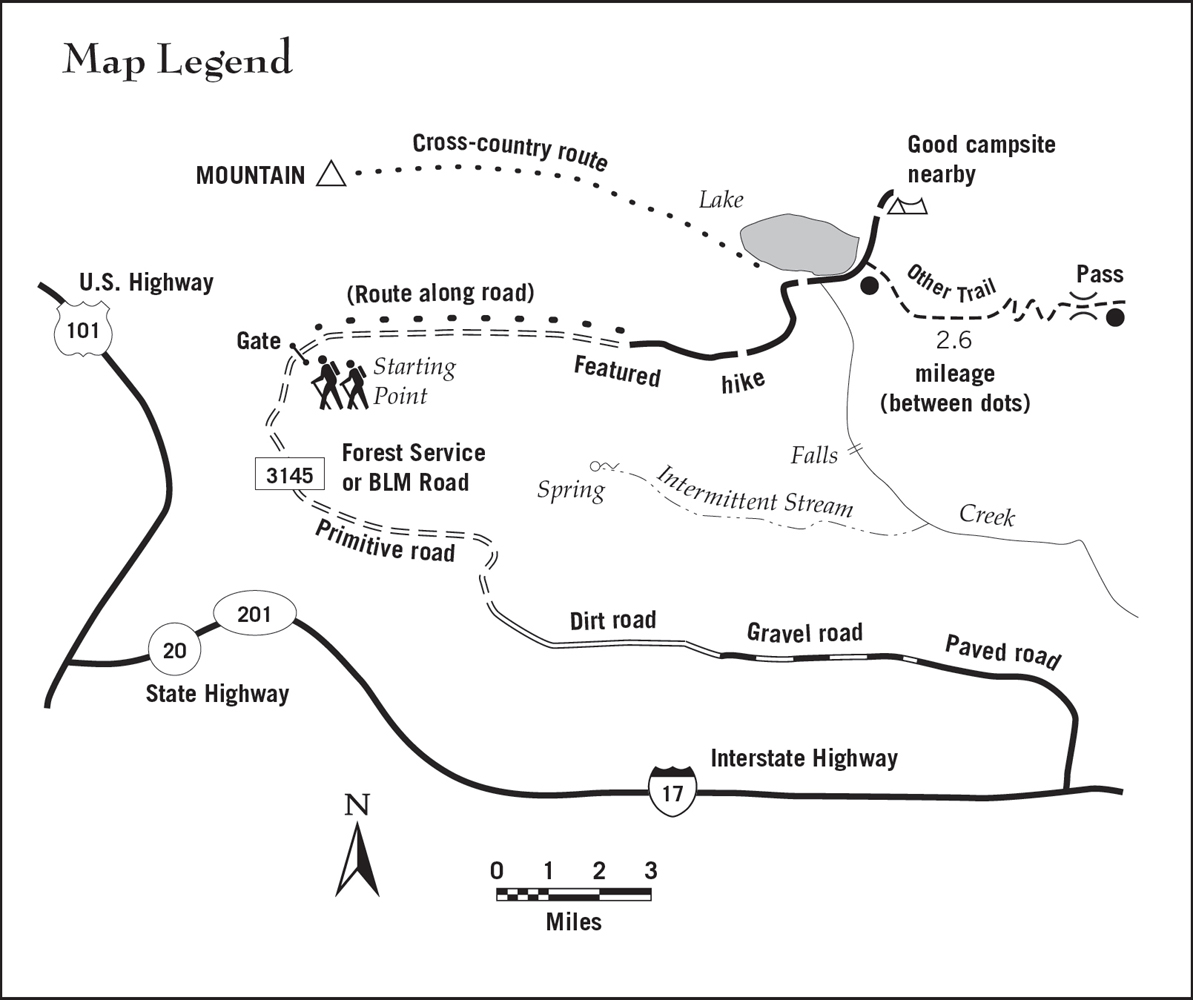
In Arizona, you can hike through deep canyons, listening to the music of a desert creek and the soft rustle of cottonwood leaves. You can walk the crest of a forested mountain range through cool sylvan glades, observing the shimmering heat of the desert vistas far below through trembling aspen leaves.
Introduction
You cant miss Showerbath Spring, which pours from an overhanging mass of travertine rock on the left side of Kanab Creek. As its name implies, the spring makes a fine, cool shower on a warm day.
Kanab Canyon Loop,
This is an especially scenic and remote loop around Powell Plateau along the Colorado River. Several permanent streams grace the route, including Thunder River, Shinumo Creek, and White Creek. Youll spend days hiking along the Colorado Rivers banks, or along the tops of cliffs a few hundred feet above the Colorado River.
Powell Plateau Loop,
Backpackers in the Blue Range have the exciting possibility of seeing or hearing a wolf. In 1998, Mexican Gray Wolves were reintroduced in the Apache National Forest as part of a program to rescue the wolves from the edge of extinction. Currently, about two dozen wolves range freely in the Gila and Apache national forests.
KP-Grant Creek Loop,
The Strayhorse Loop includes a unique section of hiking along the Blue River, and has the flavor of hiking in Arizona before the recreation explosion, when trailheads were rarely marked, backcountry trails were almost unused, and trail signs often missing.
Strayhorse Loop,
As you climb, a panoramic view of Canyon Lake and the rugged terrain around it opens behind you; dont forget to take a break and look back! Youre hiking through classic Sonoran desert, and such distinctive plants as the giant saguaro cactus and green-barked palo verde trees dominate the landscape.
La Barge-Boulder Canyon Loop,

Backpacking Arizona
1ST EDITION September 2003
3rd printing 2012
Copyright 2003 by Bruce Grubbs
Front cover photo 2003 by Tom Till
Back cover photo 2003 by Bruce Grubbs
Interior photos, except where noted, by Bruce Grubbs
Maps: Bruce Grubbs
Cover design: Jaan Hitt
Book design: Wilsted & Taylor and Jaan Hitt
Book editor: Peter Hines
ISBN 978-0-89997-324-1
Manufactured in the United States of America
| Published by: | Wilderness Press |
| Keen Communications |
| P.O. Box 43673 |
| Birmingham, AL 35243 |
| (800) 443-7227; FAX (205) 326-1012 |
| info@wildernesspress.com |
| www.wildernesspress.com |
Visit our website for a complete listing of our books and for ordering information.
Distributed by Publishers Group West
| Cover photos: | Hiking the Tonto Plateau in Grand Canyon (front, top); San Francisco Peaks (front, bottom left); Pine Mountain (front, bottom center); Courthouse Rock, Eagletail Mountains (front, bottom right); Mount Baldy Loop (back, top); Midnight Mesa Loop (back, bottom) |
| Frontispiece: | 2003, Roslyn Bullas, Hermit Trail, Grand Canyon National Park |
All rights reserved. No part of this book may be reproduced in any form, or by any means electronic, mechanical, recording, or otherwise, without written permission from the publisher, except for brief quotations used in reviews.
Acknowledgments
Id like to extend a warm thanks to all my backpacking companions over the years. Special thanks to Duart Martin, whose encouragement and support made this book possible.
Safety Notice
Although backpacking is probably safer than the drive to the trailhead, there is some risk involved. By its very nature, backpacking involves travel in remote wilderness areas where help may be days away. Anyone planning to do the trips described in this book must plan to be completely self-sufcient while in the backcountry. At least one member of the party should be experienced, and all group members should be properly equipped and t for wilderness travel. Because trail conditions, weather, and hiker abilities all vary considerably, the author and the publisher cannot assume responsibility for the safety of anyone who takes these hikes. Backcountry safety is mostly a matter of common sense and being aware of your abilities and limitations. All water sources mentioned in the hike descriptions, except for the Bright Angel Trail option on the NankoweapBright Angel Loop, are untreated and must be puried before use.
Tell us what you really think Something unclear, outdated, or just plain wrong in this book? Have a good suggestion for making it better? We welcome reader feedback on all our publications. If we use your suggestion, well send you a free book. Please email comments to: update@wildernesspress.com
To my parents, who got me into the wilderness .
Featured Trips Summary Chart


Cross-country backpacking below Powell Plateau, Grand Canyon National Park,
Introduction
T his book is a backpackers guide to hiking in Arizona. While many hiking guides cover Arizona, all of them emphasize day hikes. Backpacking Arizona primarily describes backpacking trips of three to six days, although a few overnight hikes and several trips of a week or longer are included.
Experienced local hikers know that backpacking is one of the best ways to enjoy Arizonas incredible diversity and beauty. Carrying all you need to live comfortably in the wilderness for days at a time gives the hiker a satisfying feeling of self-sufciency. Such a house on your back enables the backpacker to travel deep into the backcountry, far beyond the reach of hikers limited to a single day. In all but a few places, Arizona backpackers are free to camp nearly anywhere, at sites whose pristine beauty is beyond the imagination of the legions of vehicle recreationists who camp in a few designated campgrounds or heavily overused roadside campsites. Backpacking loads dont have to be heavy, although some trips do require you to carry heavy water loads. Modern lightweight equipment greatly reduces the load on your back, and theres a large selection of high-tech packs available that make carrying your gear surprisingly comfortable.
In Arizona, you can hike through deep canyons, listening to the music of a desert creek and the soft rustle of cottonwood leaves. You can walk the crest of a forested mountain range through cool sylvan glades, observing the shimmering heat of the desert vistas far below through the trembling aspen leaves. You can spend ten days or more wandering the depths of a great canyon system, where even human footprints are rare. You can loop from cactus-studded desert to forested mountains and back to the desert, without seeing another person for days on end, and never be more than fty miles from the states largest city.
Next page
